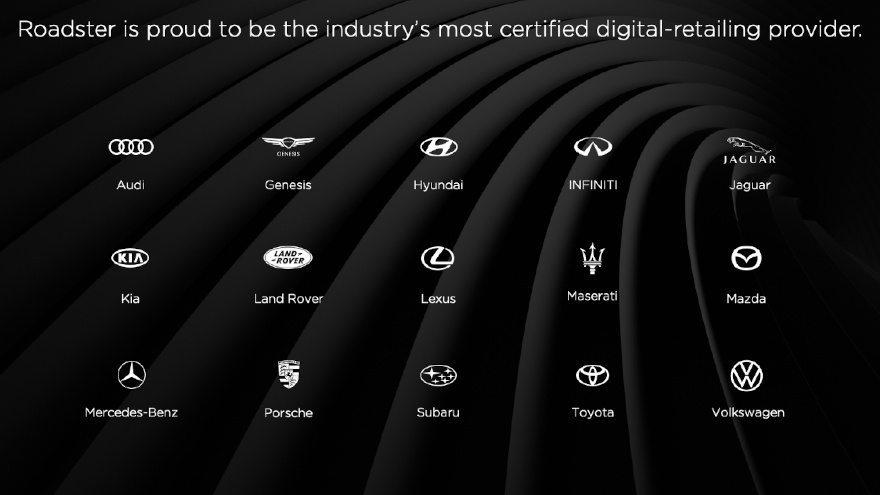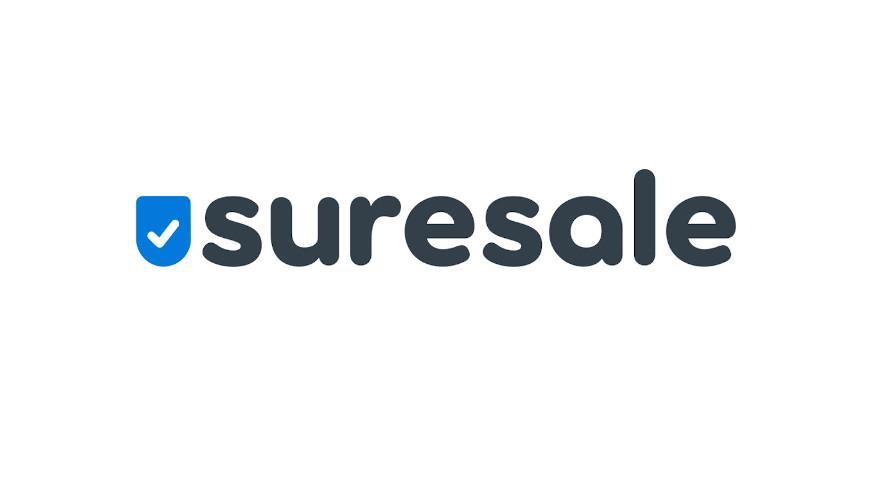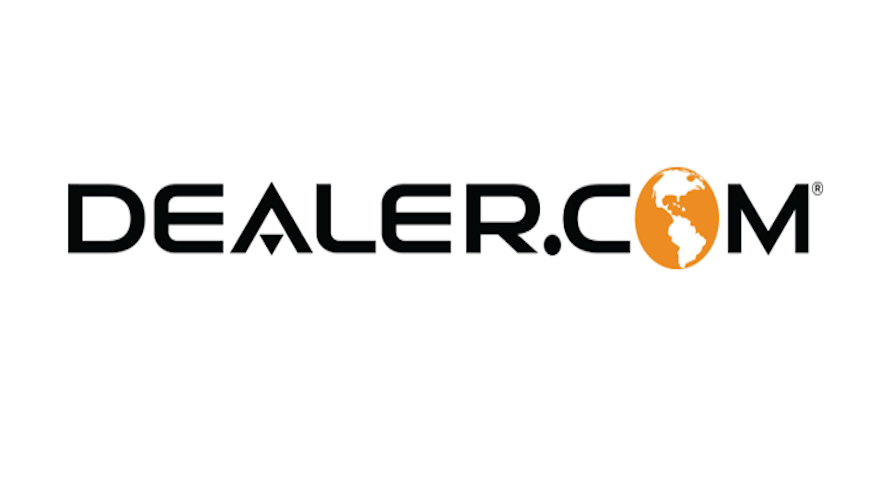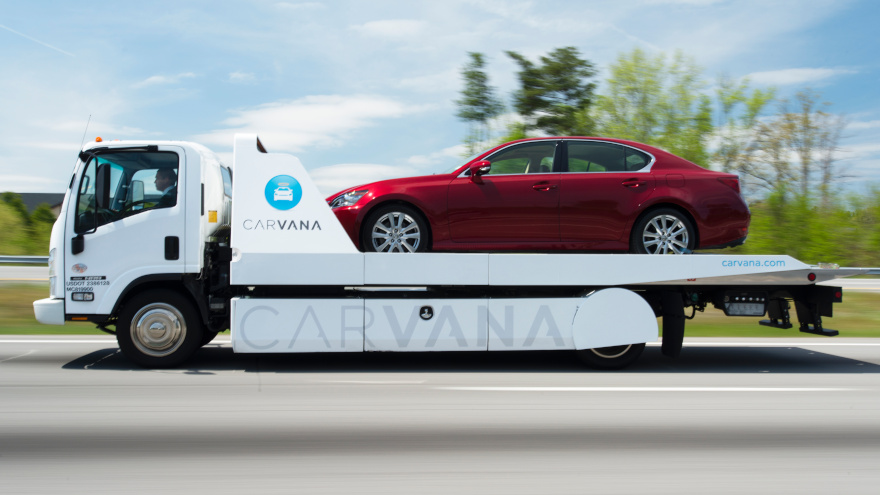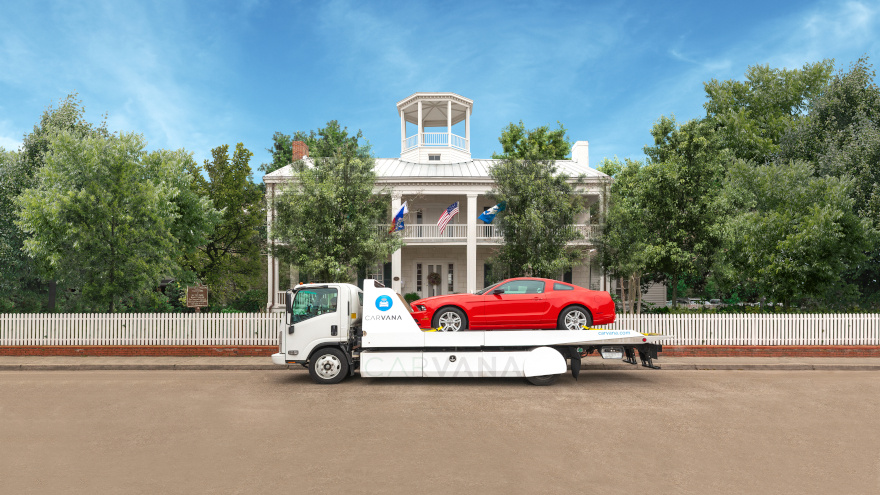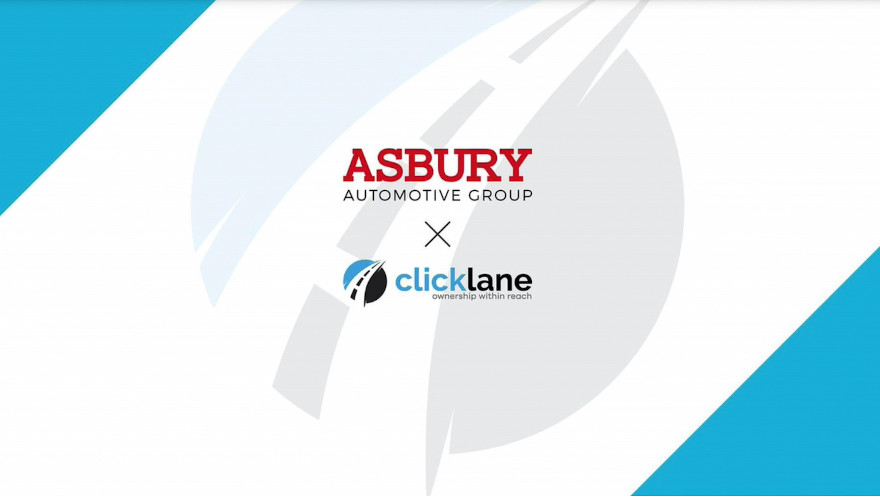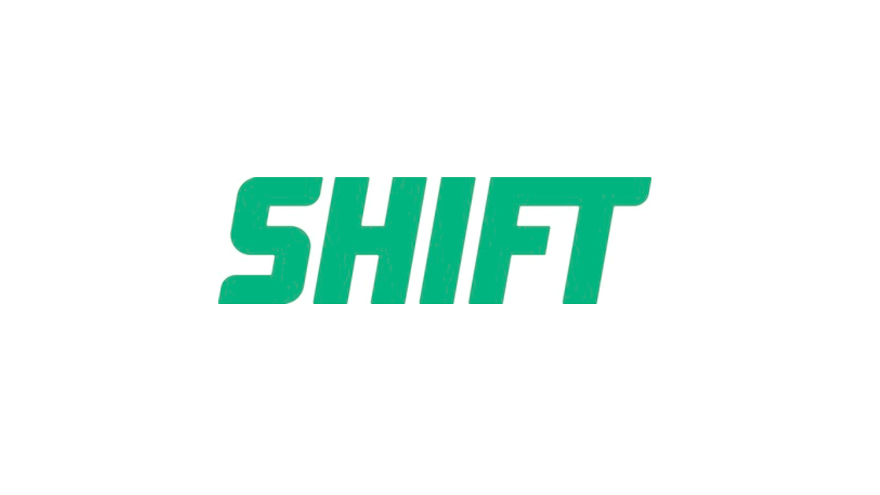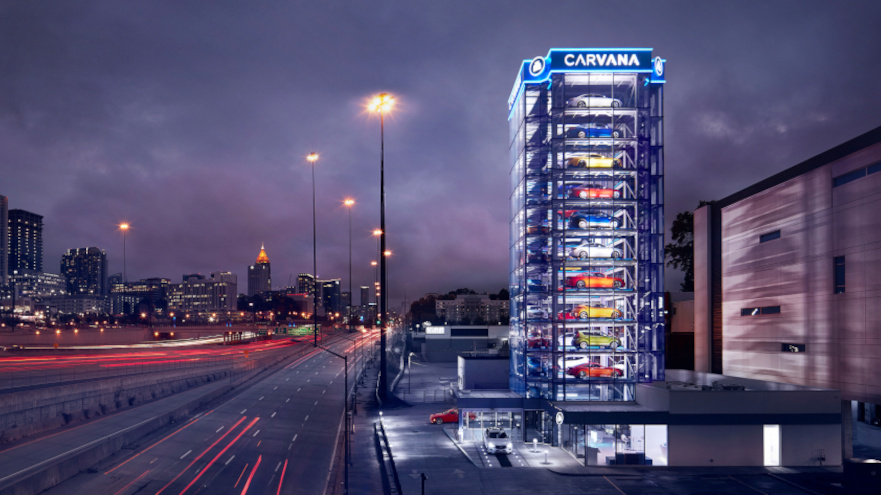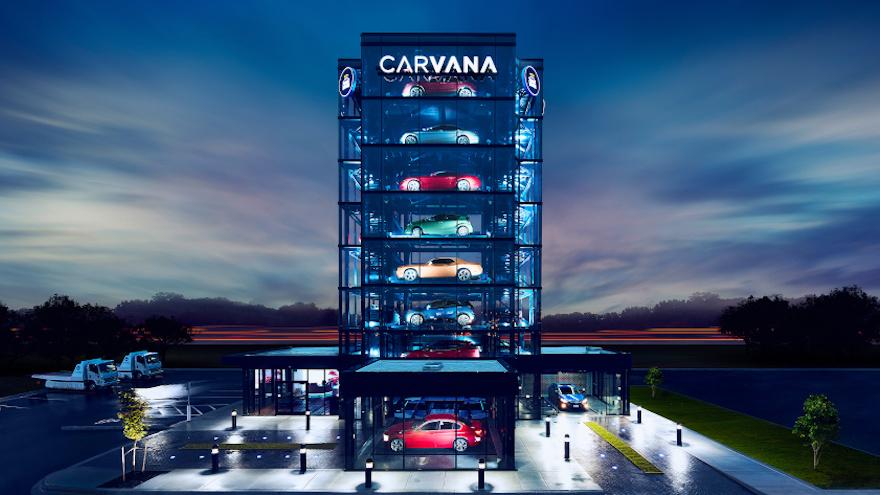Amit Chandarana describes Roadster as an omni-channel commerce platform.
“Our technology as a digital retailing tool has always been there to facilitate the online sale of a vehicle or the in-store sale of a vehicle,” said Chandarana, who is senior vice president of Roadster.
The company recently announced that it is the most certified digital retailing service, now working with 14 OEMs. Those include mainstream OEMs Hyundai, Kia, Mazda, Subaru, Toyota, and Volkswagen and luxury automakers Audi, Genesis, Infiniti, Jaguar/Land Rover, Lexus, Maserati, Mercedes-Benz and Porsche.
As the company made that announcement, it also discussed trends it is seeing in the industry, and Chandarana said one of those is that several OEMs are implementing initiatives that blur the line between the OEM and the dealership.
To show how that line is being blurred, Chandarana provided an example of the car-buying process of today. A prospective buyer visits an OEM site such as Toyota.com. The buyer finds a Camry that interests them.
With that process, no opportunity exists to determine if the buyer can actually find the right vehicle to fit his or her needs.
“Really all it is, is a lead-based economy where I can submit a lead to a dealer, and the entire process is picked up again,” Chandarana said.
He said at that point, the dealer will call the prospective customer or start e-mail correspondence with the customer with generic lead responses. The dealer will eventually try to take you back into a process that was different than the process you thought you were starting, Chandarana said.
Fewer hurdles to jump
But now, with the latest trend of blurring the line between the OEM and dealership, if the buyer believes he has found a Camry that fits his needs, he can provide just a bit of information and get directly into the commerce platform of the dealership, such as Longo Toyota, for example, and start the buying process.
At that point, Chandarana said, the buyer can get answers to his questions: Can I afford this? Does it come in a different color? Can I find out the value of my trade-in? Do I need to add a service protection plan?
That takes place “all with penny-perfect information with real rates, rebates and incentives,” Chandarana said. “And it’s essentially a seamless process now vs. this fragmented process where its just a lead-based economy.”
He went on to say that new trend is “starting to align the ecosystem,” with OEMs getting more data on how the car is performing and the dealership telling the customer about the vehicle’s service records and alerting the customer that his vehicle needs maintenance.
“It’s really the same thing that takes place on the sales side, with the OEM gathering more information about a customer who is looking to purchase a vehicle and then seamlessly passing that to a dealership, and the dealership is actually continuing your sales process vs. starting the whole thing over,” Chandarana said. “So less hurdles throughout the process.”
Line-blurring trend started with the virus
Roadster chief executive officer Andy Moss said no one would ever wish for tumultuous times such as what occurred worldwide with the COVID-19 pandemic.
“But it really catapulted us,” Moss said.
He said adoption of digital retailing technology accelerated as the pandemic set in.
“Dealers had the ability to do business, but they had to do business in a very remote, digital manner,” he said.
He went on to say Roadster has seen strong growth at the retail level and also in its activity with OEMs.
More than 1,600 dealerships are using Roadster’s Express Storefront technology and adding additional Roadster products to create a more efficient sales process.
Chandarana noted a trend that OEMs are dedicating substantial resources to modernizing the vehicle in areas such as telematics, with applications showing the vehicle’s performance and service history.
What’s lacking, he said, is customer experience in the buying process. Car companies help generate traffic and leads, and they create awareness. But then they hand everything off to the dealer, and the dealer only knows about leads and the sale.
Over the past year, OEMs have sought to have an impact on the customer journey, Chandarana said.
“So the breadcrumbs of the buying process,” Chandarana said.
He went on to say the OEMs want the buying process as a customer journey to match the quality of the vehicle that they are building.
“And we’re really starting to become a component of that,” Chandarana said. “Because we digitize the entire sales process at the dealer level, the OEMs are counting on being able to garner that information and use that insight with their dealers.”
Regarding Roadster’s news of certification as a digital retailing provider by 14 OEMs, Chandarana said that as OEMs certify Roadster, Roadster shares data with the OEMs and dealers. The OEMs get what Chandarana described as a helicopter view of the entire sales process.
He said the process is similar to what takes place with a health app on your iPhone. If it tells you that you have only taken 2,000 steps that day, you might take more steps to get to 2,500.
“Giving you that data allows you to start making changes, and that’s really what the certification processes are alluding toward, really providing more data, more insight and a more seamless customer experience,” he said.
To help auto dealers capitalize on their digital retail efforts and reach more used-vehicle buyers online, SureSale has expanded its digital merchandising options.
SureSale, which said it helps auto dealers provide car buyers with verification of vehicle quality and condition, said its digital merchandising allows used-vehicle inventory to stand out in crowded marketplaces.
Because of that, SureSale said auto dealers are reporting an increase in vehicle detail page views and customers.
SureSale vice president of sales Sean Peoples said SureSale’s proprietary platform integrates with dealer platforms to help auto dealers amplify the fact that their vehicles have gone through an inspection, road test and history check.
“The trust and digital engagement this creates is increasing vehicle detail page [VDP] views and buyer consideration for auto dealers, all of which leads to increased used vehicle sales,” Peoples said in a news release.
The company highlighted a recent three-month analysis based on results from several auto dealerships showing that vehicles with a SureSale report experienced a 20% increase in VDP views and leads on third-party marketplaces.
That analysis determined data by comparing vehicles with a SureSale vehicle quality report to a control group on some of the most trafficked auto marketplaces. CarGurus and Autotrader were two of those marketplaces.
Peoples said the SureSale vehicle quality report provides depth of information on each vehicle. Rather than just listing vehicle history, SureSale includes the vehicle’s past and present condition.
That brings consumer confidence and generates a more informed, efficient and valuable transaction for auto dealers, Peoples said.
As the pandemic has increased the number of car shoppers going online, empowering auto dealerships with digital tools that facilitate a more contactless transaction, and that boost vehicle visibility, has increased in importance, SureSale said.
Also, as people avoid mass transportation and ride-sharing, the importance of vehicle ownership has grown, according to the company.
That is bringing a new wave of car buyers into the market, and as new vehicle prices rise, many people are looking at pre-owned vehicles’ affordability.
That all means increased competition — and opportunity — is now being seen in the used-vehicle market.
SureSale integrates with auto dealers’ inventory feeds and image management systems, letting its mobile app users instantly validate vehicle quality and condition.
SureSale’s proprietary platform analyzes thousands of data points including those from the 170-point inspection and road test, as well as a history check. That generates a SureSale vehicle quality report for each vehicle.
SureSale said its enhanced digital merchandising then kicks in.
That digitally badges each vehicle and merchandising listings across third-party marketplaces. The merchandising is turn-key for the dealership, SureSale said, adding that it increases engagement on vehicle listings.
That, according to the company, helps dealers to sell more vehicles, build trust and provide peace-of-mind.
Dealer.com is announcing new services at the virtual NADA Show 2021, and one of those is connected video advertising to reach in-market shoppers wherever they consume media.
The company said it was unveiling the new services to help dealerships inspire more successful conversations in more places.
Other services Dealer.com is unveiling are in the areas of holistic reputation management, digital storefront experiences and digital retailing.
Noting that current market conditions demand an agile approach, Dealer.com said strategies misaligned with consumer expectations can result in inefficient marketing spend and insufficient results.
Dealerships can bring the best of the dealership to wherever consumers browse, shop, or buy online to engage with shoppers on their terms. That, according to Dealer.com, results in confidence and transparency during the process.
The company said dealerships can use more customized, coordinated outreach across all digital touchpoints to influence how quickly shoppers find the right vehicle.
That connection leads to higher conversion.
Regarding one of the company’s latest innovations — connected video advertising — Dealer.com said it gives dealerships the power to deliver hyper-targeted video ads to consumers watching connected TV and over-the-top media. In the age of “cord-cutting” and internet TV, dealerships can target consumers streaming platforms and devices with as much precision as their other digital channels, the company said, adding that it can take place with verifiable ROI that challenges traditional TV spend.
Other new services from Dealer.com include:
— Redefining digital retailing functionality that meets dealer and user demands: By eliminating back-and-forth in person and online, dealers can pave the path to purchase and help streamline customer interactions. Dealer.com said its next-generation digital retailing experience brings a more seamless workflow for shoppers and dealers that reduces time spent in-store. The tool uses guided navigation to simplify the sales process for dealers and consumers. It also brings consumer confidence, trust and transparency.
— Reputation management tools, which can help attract more customers and increase leads: Dealer.com said dealers should reinforce their dealership reputation and appeal to new shoppers by taking advantage of customer reviews. Review Generation uses a high-converting SMS-based review request system to engage customers. That takes place while the transaction is still top of mind, to create a constant stream of reputation-based reviews that Dealer.com says can improve sales and customer retention. Dealer.com describes reviews as an influential factor among car buyers. Dealerships, the company said, need an efficient, easy way to solicit and manage these endorsements.
— Gain visibility and interact more with shoppers through a more immersive digital storefront experience: Over the past 24 months, the foundational redesign of the Dealer.com website platform features a complete code rebuild, secure cloud-based hosting, and data and shopper-guided site redesigns. Those can inspire confidence and drive leads. New Innovations such as free-text search with auto suggestions through the new SRP Experience can quickly bring in-market shoppers to the content they are looking for. That can boost the quality of conversion, the company said. Dealers can upgrade online “curb appeal” and engage shoppers at important decision-making moments with new home and interior page design, and they can also put important offerings such as Home Services front and center on the VDP to attract more shoppers interested in remote sales and service areas.
Scott Shepherd, internet manager, eCommerce and marketing director for Classic Cadillac of Atlanta and Cadillac of Birmingham, said the Dealer.com platform allows him to visualize the goal of helping customers find what they need in a fast, hassle-free manner.
“I always feel like progress is being made on my website. Whether it is changes we’ve set into motion or new components, tools and formats that are being done by DDC, there is always forward thinking, positive change,” Shepherd said in a news release.
Dealer.com associate vice president of products Bob George said consumers have high expectations regarding their shopping experience.
“And we’ve heard from many of our dealer groups that they want to offer a differentiated experience and start having more meaningful conversations with their customers,” George said. “We are able to provide solutions to problems dealers don’t even know they have. We’re giving dealers the tools to create more of a dialogue with a continuous customer experience that starts with strong targeting and ends with a tailored, one-on-one experience.”
For more with George, see the episode of the Auto Remarketing Podcast below.
Carvana on Thursday made two announcements showing that it seems to plan a continuation of its trend of growth into 2021.
After saying Wednesday that it was making its Louisiana debut by bringing its as-soon-as-next-day touchless home delivery to four cities in that state, the company made two additional announcements on Thursday. The first was that it would be expanding its New Mexico footprint by offering as-soon-as-next-day touchless home delivery to Las Cruces-area residents.
Carvana also on Thursday said it would be offering as-soon-as-next-day touchless home delivery to El Paso, Texas-area residents.
With the two announcements, Carvana now offers as-soon-as-next-day vehicle delivery to customers in 272 U.S. cities.
Regarding the first announcement on Thursday, Carvana founder and chief executive officer Ernie Garcia said Las Cruces is the third New Mexico market for Carvana.
“More New Mexico residents can now shop our nationwide inventory with as-soon-as next day vehicle delivery, understand financing on all of those vehicles with our car loan calculator and enjoy the ease and convenience our digital shopping experience offers,” Garcia said in a news release.
Discussing the news on Carvana’s El Paso move, Garcia said the company is increasing its presence in Texas, where Carvana has served customers for more than five years.
Carvana made its Louisiana debut on Wednesday.
The online retailer announced it was bringing its as-soon-as-next-day touchless home delivery to Lafayette, then made three subsequent announcements that it was launching in the Louisiana cities of Alexandria, Lake Charles and Baton Rouge, as well.
In the first announcement on Carvana’s offering in Lafayette, Carvana’s founder and chief executive officer Ernie Garcia said the company was confident that Louisiana customers would embrace its easy, transparent car buying experience.
“Today’s debut in Louisiana means we can offer as-soon-as-next-day delivery of thousands of vehicles to Lafayette area residents, giving them a great selection, at great prices, with great customer service,” Garcia said in the initial news release. “Whether you’re looking for a Jeep Wrangler or a Honda Civic, we’re confident customers in Louisiana will embrace our easy, transparent car buying experience.”
Garcia said steadily growing Carvana’s Louisiana presence allows it to bring Carvana’s selection, safety and transparency to thousands of new customers.
With all four Louisiana announcements, Carvana now offers as-soon-as-next-day vehicle delivery to customers in 270 U.S. cities.
Making another marquee move to begin 2021, Cox Automotive has launched a new end-to-end digital retail experience today that it says can “bring every step of the car-buying journey and every part of the deal process together — start, flow, sign and close.”
Complete Retail, which is the first Cox Automotive-branded end-to-end retail solution, implements the services of Autotrader, Dealer.com, Kelley Blue Book, VinSolutions and Dealertrack.
It aims to connect each piece of the retail process, from working the deal to signing and closing. And connect the existing digital retailing solutions within the Cox Automotive family of companies.
“For years, retailers and consumers have asked for the freedom to start and complete the car buying experience from anywhere, without having to backtrack, start over or re-enter data at any point in the journey — now they have that freedom,” said Lori Wittman, who is Cox Automotive’s senior vice president of dealer software solutions, in a news release. “Complete Retail isn’t just software, it’s progress toward the future that only Cox Automotive could bring together in one place.”
In the release, Wittman later added: “It is significant that Complete Retail carries the Cox Automotive brand because it provides all our clients — consumers, retailers, lenders, and OEMs — with flexible tools and a customized approach to shopping, sales and operations.”
Of course, Cox Automotive has long addressed digital retailing and various stages of that process through its host of companies Take the Accelerate tool at Autotrader, for instance.
But in an episode of the Auto Remarketing Podcast recorded Friday, Cox Automotive senior vice president of consumer solutions Jessica Stafford explained what makes Complete Retail different than Cox Automotive’s prior work in digital retail.
"Complete Retail is our way of connecting the dots between all of those digital retailing tools, and something that only Cox Automotive can offer because of the breadth of our tools and the portfolio of the businesses that we have,” Stafford said.
"It's really connecting the dots for both the consumer, so that we can meet those demands of digital buying and seamless, intuitive experiences that are transparent and also consistent,” she said. “And then, of course, meeting the needs of our customers, whether its dealers, manufacturers, lenders who are looking for ways to provide consumers with that amazing experience and also drive efficiency in their operation.
"Complete Retail enhances and makes even better each (of the) individual tools in that process, whether it's how your classifieds show up on Autotrader and Kelley Blue Book and digital buying tools there, or how those deals then feed into your VinSolutions CRM, allowing for communication with customers that's seamless. And then again, tiering all the way through the potential for e-signature,” Stafford said. “And so really the differentiator here is it's our time marketing it … as a true end-to-end solution that connects those dots.”
Stafford explains Complete Retail in further detail in the episode below.
Asbury Automotive Group launched an end-to-end digital car-buying platform Wednesday that it says will allow consumers to purchase a vehicle online in 15 minutes.
And it has some potential to help Asbury expand in the pre-owned market, as well.
Clicklane, which Asbury said is an “evolution” of its PushStart tool, is a communications technology ecosystem that the retailer worked with Gubagoo to build, and it gives consumers “one platform for the entire life cycle of vehicle ownership,” as Asbury chief executive officer and president David Hult said in a news release.
The online platform gives Asbury not only a way to improve the car-buying experience at its existing stores, but within the pre-owned segment, Asbury can enter new markets as a standalone Clicklane brand.
“Clicklane is the latest evolution in our omni-channel strategy that we began more than four years ago,” Hult said.
“The future of the automotive retail industry relies on innovation and our ability to meet consumers where they are — online,” Hult said. “With Clicklane, we have created one platform for the entire life cycle of vehicle ownership and found the solution to what has been a fragmented process.
“Others may have pioneered the online car-buying experience, but we believe that we have perfected it.”
Among the unique amenities to Clicklane are:
— Providing penny-perfect trade-in values and loan payoffs
— Provides real payment amounts considering local taxes/fees
— A financing marketplace that includes more than 30 providers
— VIN-specific F&I products
— Consumers can sign all documents online via DocuSign
— Users can schedule service and collision appointments through the platform
“Ultimately, at the end of the day, it’s a true online retail tool that’s built around the entire immersive online purchase experience for the consumer, from end to end, 100% online, inclusive of all documentation, loan origination and everything in between,” vice president and chief marketing officer Miran Maric said during a video presentation Wednesday.
Clicklane was piloted at one of Asbury’s dealerships in Florida. The retailer has now brought it to several of its dealerships across the country, with the aim of rolling it out to all of its dealerships by the end of the first quarter.
Then next step would be for Clicklane to move into new markets where Asbury doesn’t have brick-and-mortar stores. That’s where the pre-owned focus would come into play in terms of Clicklane being a standalone brand.
Asbury previously had a Q auto standalone used-car store program, but that was focused on brick-and-mortar locations, which is where the Clicklane would diverge.
“When we started Q auto, we got it profitable. But when we looked at it, and Carvana coming into the space and it becoming a digital world, the brick-and-mortar didn’t make sense to us,” Hult said during a Q&A portion of an online video presentation Wednesday. “The engagement point was online, and our ability to offer a transparent experience in a full end-to-end solution was going to be the differentiator, that we believe.”
He added: “Years ago, we decided Q auto was profitable. There’s a large expense in doing this. What’s the benefit of the brick-and-mortar expense, when this is going to be an online transaction?”
Noting a questioner’s reference to Carvana, Hult said, “You can see their sales, with no brick-and-mortar, really, other than those vending machines, and the number of people transacting online.”
The pandemic, he said, has accelerated the willingness of consumers to buy online.
Shift has added a third market in Texas where consumers can sell their cars to the used-car ecommerce company.
Joining Austin and San Antonio as consumer car-selling service markets is Fort Worth.
"Fort Worth is a major thoroughfare in the state, and a huge opportunity for Shift to continue to expand in the Texas geography," Shift co-CEO Toby Russell said in a news release. "We're thrilled to be taking this next step and bring our service to more and more consumers across the state."
Consumers can go to Shift.com to get an instant estimate for their car. If the customer then wants to proceed in getting an evaluation, he or she can book an appointment to have a Shift Concierge come out to evaluate the car and make an offer.
If the offer is accepted, the transaction is completed at that time on an iPad, with payment to the customer arriving digitally within days, Shift said.
Carvana sold its first car in Atlanta in 2013. Since then, the company has opened car vending machines across the United States.
On Wednesday, Carvana said it was opening its 27th car vending machine, and the company said that would be in Atlanta, the city where it all started.
“It’s fitting that our flagship location is in the community that has supported us from the beginning,” Carvana founder and chief executive officer Ernie Garcia said in a news release.
Carvana also said the Atlanta car vending machine is its tallest in the United States, standing 12 stories high with a 43-vehicle capacity. Customers can shop more than 20,000 vehicles, finance, purchase, trade in, and schedule as-soon-as-next-day pick up at the new Atlanta car vending machine. Area customers can also choose touch-less home delivery.
Carvana operates additional car vending machines in Kentucky, Tennessee, Texas, Florida, Maryland, Arizona, Ohio, Pennsylvania, Indiana, Illinois, Missouri, North Carolina, Oklahoma and California.
In other Carvana news, the company said on Monday it was offering its as-soon-as-next-day touchless home delivery to Harrisonburg, Va.-area residents.
Carvana now offers as-soon-as-next-day vehicle delivery to customers in 263 U.S. cities.
“Harrisonburg residents will now be able to choose from thousands of vehicles online and have it delivered to their front door as soon as the next day,” Garcia said. “An easy, convenient and transparent car buying experience is an offering we’re confident the community will embrace.”
After announcing in late October that it showed a 41% year-over-year revenue increase in the third quarter, Carvana on Friday announced a “Live Feelessly” campaign, encouraging customers to take a stand against hidden, last-minute fees.
The campaign communicates to consumers that they should seek pricing transparency when making purchases.
The Live Feelessly campaign includes a new 30-second TV ad and digital assets.
It also includes a social media movement, #FeelessFriday, encouraging consumers to go fee-free on Fridays.
“When we pioneered online car buying more than seven years ago, we knew we would do a lot of things differently, including not relying on standard industry practices like last-minute ‘doc fees,’” Carvana chief brand officer Ryan Keeton said in a news release.
Keeton continued, “At Carvana, we believe in treating people better, and empowering them to make their next purchase on their own terms. That means giving our customers detailed, 360-degree photos of every vehicle, inside and out, financing terms in minutes, a real offer on their trade-in and no hidden, last-minute fees; a transparent purchase from start to finish so they can Live Feelessly.”
Carvana notes that consumers’ lives are filled with fees. Those can include food delivery, travel, and car buying.
“But when you Live Feelessly, you choose freedom over fees,” Carvana stated.
The company said social media fans can make Fridays fee-free and post their #FeelessFriday actions and tips on Instagram and Twitter, showing how they are going to Live Feelessly.
For example, if people cook dinner instead of ordering delivery, go camping instead of paying resort fees at a hotel or get cash at their bank instead of paying ATM fees, they can tag @gocarvana on Instagram or @carvana on Twitter to “show off your #FeelessFriday,” Carvana said.
The company said many people are unaware of fees, which are avoidable and often times hidden, that mark-up the sale price of a car. Those fees, which can include doc fees, prep fees, cleaning fees, and market adjustment fees, average nearly $2,000 per vehicle purchase, according to Carvana. The company added that only 15 states have limitations in place for dealer documentation fees, which it says are one of the highest hidden fees.
According to Carvana, those fees disproportionately affect first-time car buyers and those with smaller budgets.
“Our research has shown that many car buyers who are shopping at a lower price point, and more specifically on the market for a used vehicle, need and are looking for more trust and ‘making smart choices’ when it comes to their car purchase,” Alexander Edwards of Strategic Vision was quoted as saying in a Carvana news release. “They have a significantly higher ‘financial trigger’ such as running the vehicle into the ground or simply being attracted to current pricing.”
Carvana also pointed to data from YouGov Profiles showing that more than one in three consumers planning to buy a used car in the next year intend to spend less than $10,000.
The company said an additional $2,000 in fees is a significant for those consumers, and those fees represent an often-unexpected cost increase to budgets that may already be experiencing COVID-19 related constraints.
According to Carvana, because more than half of all used vehicle purchases involve financing, many of these fees can often continue to grow throughout a loan’s term agreement.
Regarding Carvana’s third-quarter 2020 financial results for the quarter ended Sept. 30, the company said it sold 64,414 retail units, which was a 39% year-over-year increase. Carvana’s revenue of $1.544 billion was a 41% year-over-year increase. And its total gross profit of $261.3 million was a year-over-year increase of 90%.
In addition, Carvana showed a 128% year-over-year increase in vehicles purchased directly from customers.
“Third quarter results were incredible,” Carvana founder and chief executive officer Ernie Garcia said.
Garcia continued, “We delivered another quarter of strong growth and crossed many financial milestones. This was only made possible by our incredible team, their relentless focus on delivering the best customer experiences available when buying a car, and all the progress that focus has generated since launching the company seven years ago. We can't thank them enough.”

